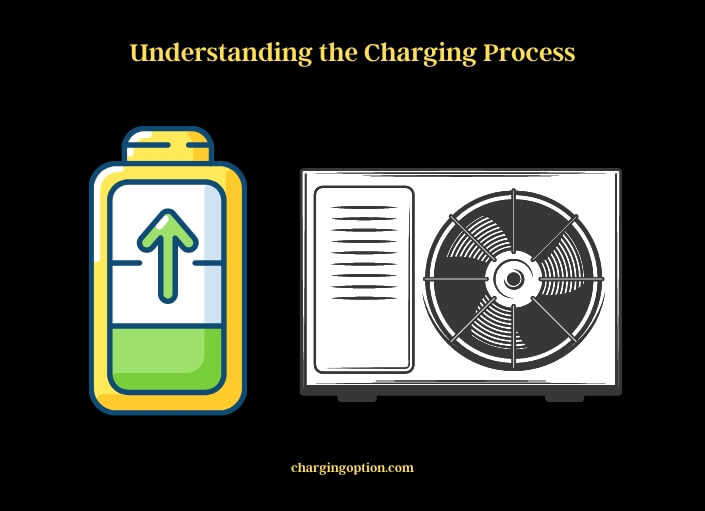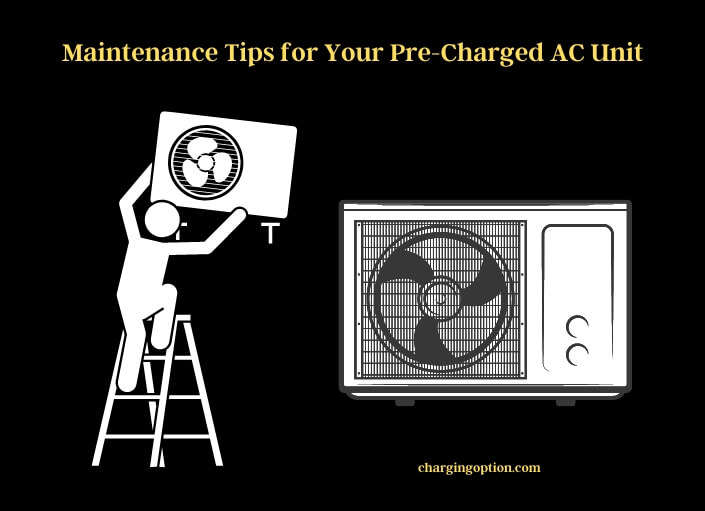The summer sun is blazing, and it’s time to ensure your air conditioner (AC) is up to the task. But you might be scratching your head over a key question: Do AC units come pre-charged? Let’s dive in and unravel this mystery.

Do AC Units Come Pre-Charged? Unearthing the Truth
For those who’ve just hit a road bump in their AC journey, let’s address your primary concern. Yes, most modern AC units do come pre-charged with refrigerant. However, it’s a mixed bag with older models and special types, which might require a manual fill-up. The refrigerant charge is usually included in the package, allowing your unit to spring to life right out of the box.
The Science Behind Pre-Charged AC Units
Without delving into the nitty-gritty of thermodynamics, the basic principle is this: your AC unit works by absorbing heat from indoors and expelling it outdoors. The refrigerant — the hero of our story — facilitates this heat exchange. When it comes to new AC units, manufacturers have made life easier for customers by pre-charging the units with the right amount of refrigerant. So, you’re not just buying an AC unit; you’re buying comfort ready to go.
Pros and Cons of Pre-Charged AC Units
Just like every coin has two sides, pre-charged AC units also have their share of pros and cons.
Benefits of Pre-Charged Units
- Hassle-Free Installation: With the refrigerant pre-installed, you don’t have to worry about filling it up or finding a professional to do it for you.
- Optimal Performance: The unit comes with the correct amount of refrigerant, ensuring its efficiency and cooling capacity.
- Reduced Risk of Errors: Without the need to manually charge the unit, there’s a lower chance of issues arising from incorrect filling.
Drawbacks of Pre-Charged Units
- Limited Flexibility: If you have specific refrigerant preferences, a pre-charged unit might not cater to your needs.
- Potential Leakage: If the unit isn’t handled correctly during shipping or installation, the refrigerant might leak, affecting the unit’s performance.
Understanding the Charging Process
While most units come pre-charged, there might be instances where you need to charge your AC unit manually. Here’s how it usually works.

The Steps Involved in Charging an AC Unit
- Check the refrigerant level using a manifold gauge.
- If the level is low, locate the service valves.
- Connect a refrigerant container to the service valves.
- Open the valves to allow the refrigerant to flow into the unit.
Remember, charging an AC unit is typically a task for professionals. If you’re not sure, it’s best to call in an expert to avoid potential damage.
Frequently Asked Questions About Pre-Charged AC Units
Let’s clear up some common queries you might have about pre-charged AC units.
Do all AC units come pre-charged?
Most new AC units come pre-charged, but there are exceptions, especially with older models or certain types of AC units.
How do I know if my AC unit is pre-charged?
The product specifications or manual should indicate if the unit comes pre-charged. If in doubt, contact the manufacturer or seller.
Can I charge an AC unit myself?
Unless you’re a certified HVAC technician, it’s recommended to have a professional handle the charging process to avoid any potential damage or safety risks.
How often do I need to recharge my AC unit?
Typically, AC units don’t need to be recharged unless there’s a leak. An annual inspection by a professional can help identify any issues early.
Can a pre-charged AC unit be overcharged?
Yes, pre-charged AC units can be overcharged if additional refrigerant is unnecessarily added. This can lead to decreased efficiency and potential damage.
What type of refrigerant do pre-charged AC units typically contain?
Most modern AC units are pre-charged with R-410A, a refrigerant that’s considered more environmentally friendly compared to its predecessors.
Wrapping Up: The Verdict on Pre-Charged AC Units
So, do AC units come pre-charged? In most cases, the answer is a resounding yes. This trend has simplified the installation process, ensuring that your AC unit is ready to combat the summer heat as soon as it’s installed. However, it’s always important to confirm this with the manufacturer or seller, as there are exceptions.
Moreover, while the concept of pre-charged AC units brings convenience, it doesn’t eliminate the need for regular maintenance. Whether your AC unit is pre-charged or not, it’s crucial to have it inspected regularly by a professional to ensure optimal performance and longevity.
Choosing the Right AC Unit
When selecting an AC unit, it’s not just about whether it’s pre-charged. You should also consider other factors such as its cooling capacity, energy efficiency, and compatibility with your space. A pre-charged unit can be a great option if you’re looking for a hassle-free installation, but remember that the best AC unit for you will depend on your unique needs and circumstances.
Maintenance Tips for Your Pre-Charged AC Unit
Now that we’ve addressed the question of “do AC units come pre-charged”, let’s dive into some tips to keep your unit running smoothly.
Regular Cleaning
Dust and debris can hinder your AC unit’s performance. Regularly clean the filters and the outdoor unit to ensure a free flow of air.

Scheduled Professional Maintenance
A professional can detect issues that might be invisible to the untrained eye. Schedule regular professional maintenance to keep your unit in top-notch condition.
Monitor Refrigerant Levels
While pre-charged units come with the right amount of refrigerant, leaks can occur. If your AC isn’t cooling as well as it should, it’s time to call in a professional to check the refrigerant level.
All in all, knowing the ins and outs of your AC unit, whether it’s pre-charged or not, can save you a lot of headaches. Here’s to a cooler, more comfortable summer!
Read more:
